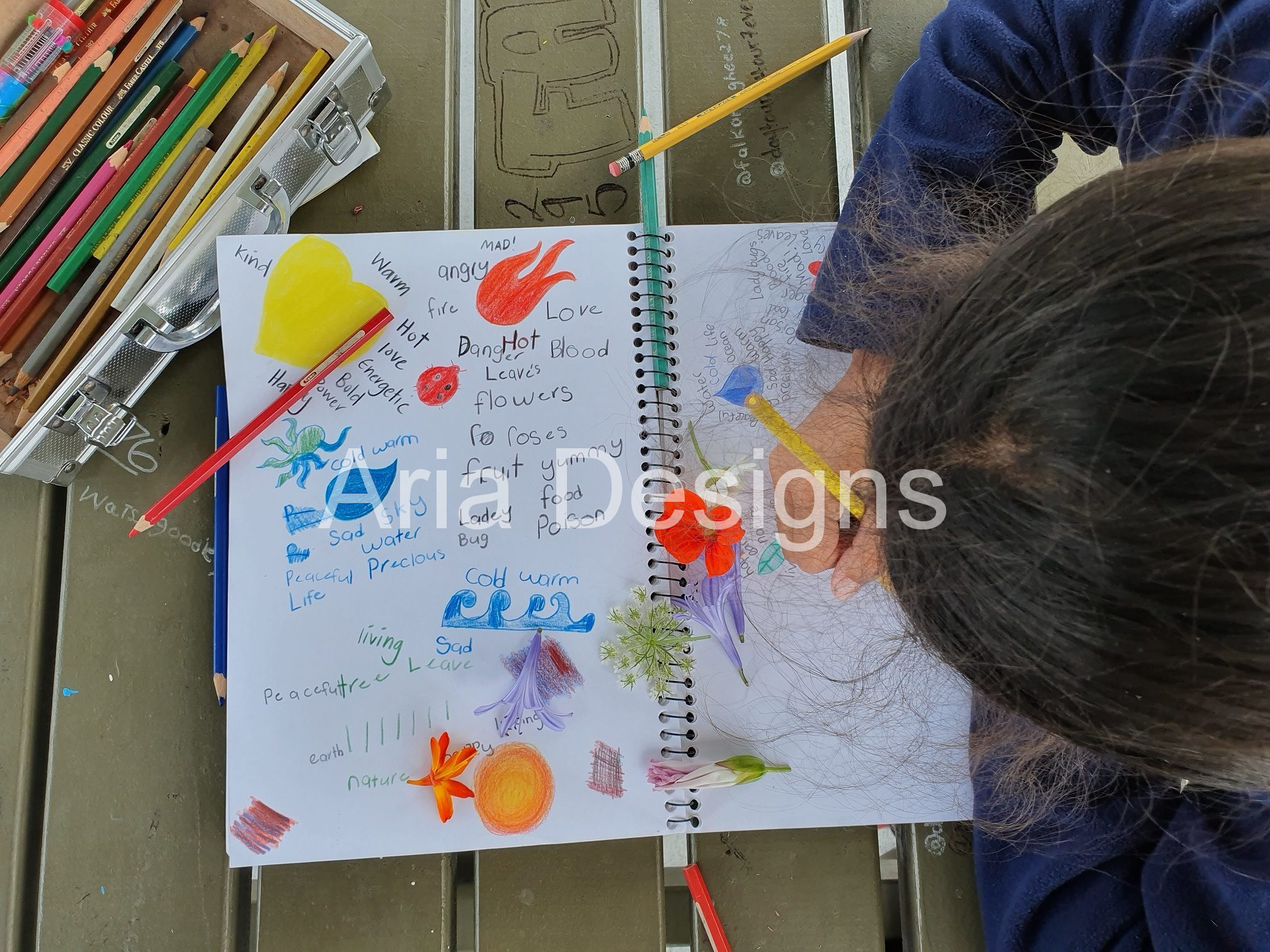
Toi kete
The toi kete (visual diary) is a valuable tool for recording your creative process and ideas in their raw form.
A toi kete for problem solving, brainstorming visual ideas and contextual themes.
A space for visualisation and realisation to take physical form and shape.
Drawings, sketches, photo's, writings are some of the things that can be found in one's toi kete - for future and past reference.
A very important tool in our Toi Mauri tool kit.
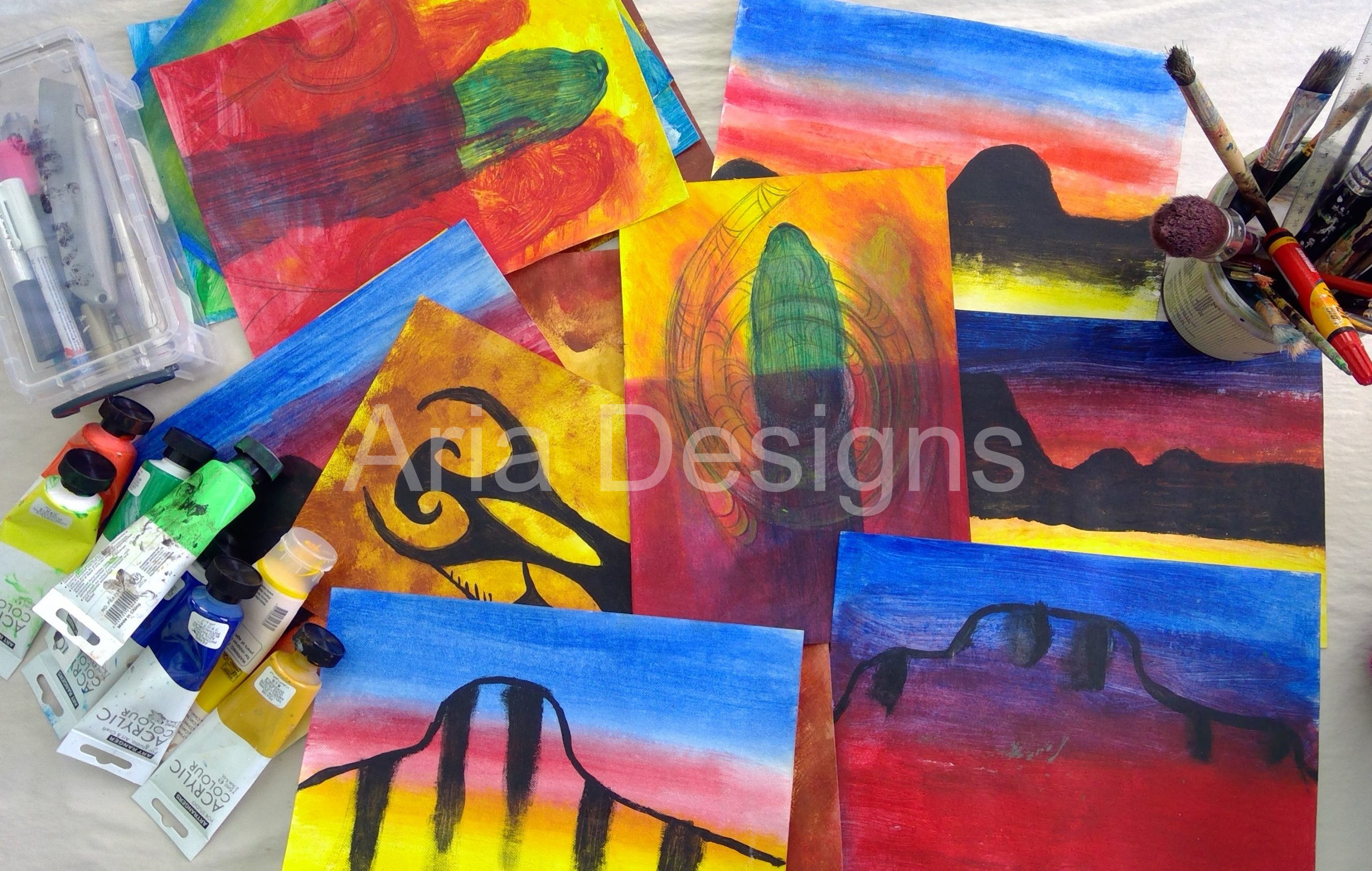
Speaking in colour
Lets look to the language of colour to express what words cannot.
Every colour has a vibration, either high or low. Every colour has a frequency, either negative or positive. Every colour has senses, either hot or cold.
The same goes for our emotions. Colour when used with intent, can express an emotional response from the viewer.
Colour communicates the inner reflections of the artist, outwards.
We also look to nature for its use of colour. Sometimes to repel, sometimes to attract. Colour in nature can be a warning of danger, or act as a camouflage.
Transferred over into design elements, colour becomes a powerful language for communication.
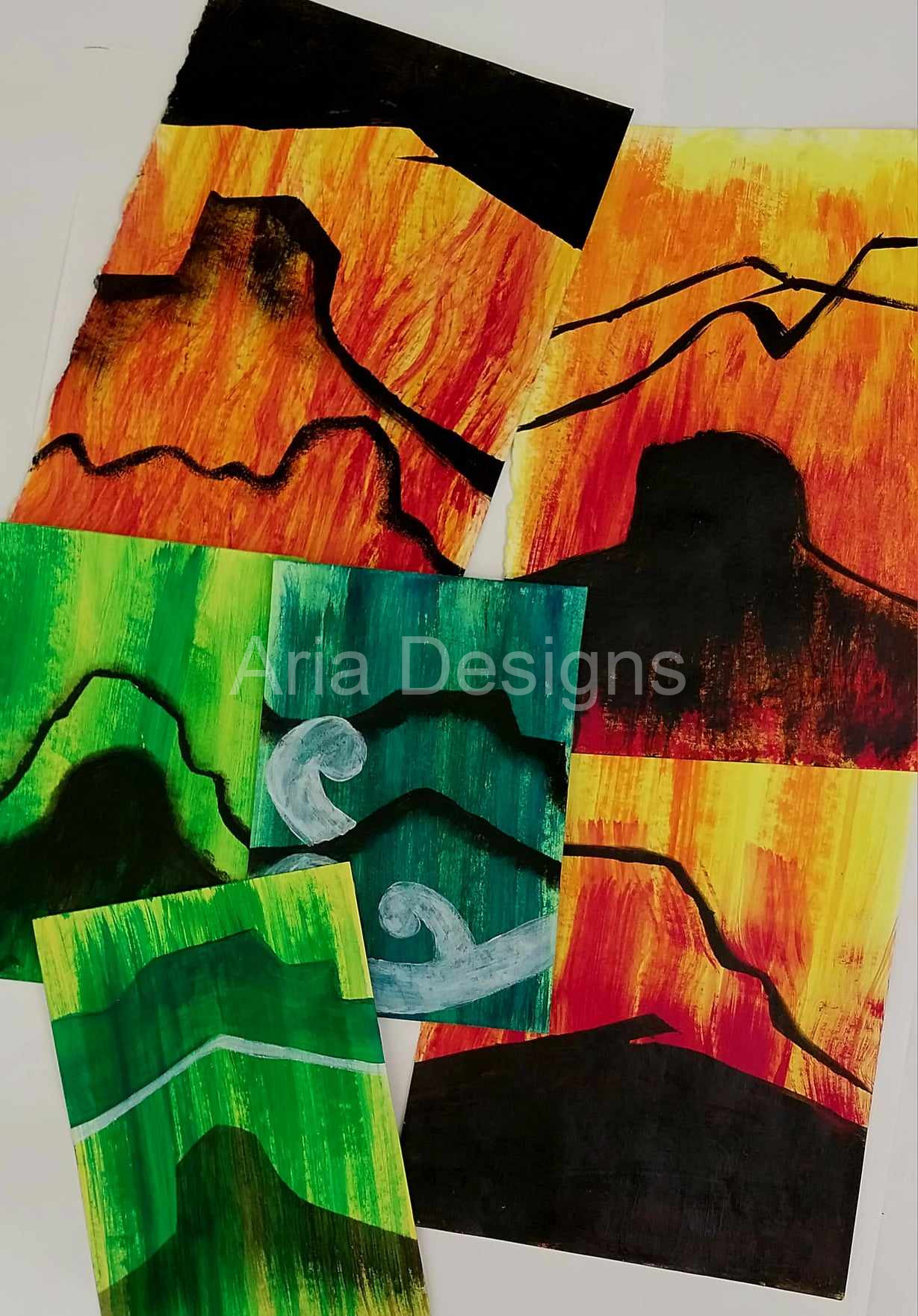
Purakau o Whangaroa
In this lesson we reference the purakau of Whangaroa - pushed to the brink of erasure through the efforts of colonisation.
One of these purakau is our origin story that describes the terraforming of Whangaroa.
Again, we rely on the energy of colour to express this ancient upheaval represented here as a battle of the Maunga to express this cataclysmic event.
Whangaroa has a rich cultural heritage with many purakau to inspire and ignite our imaginations.
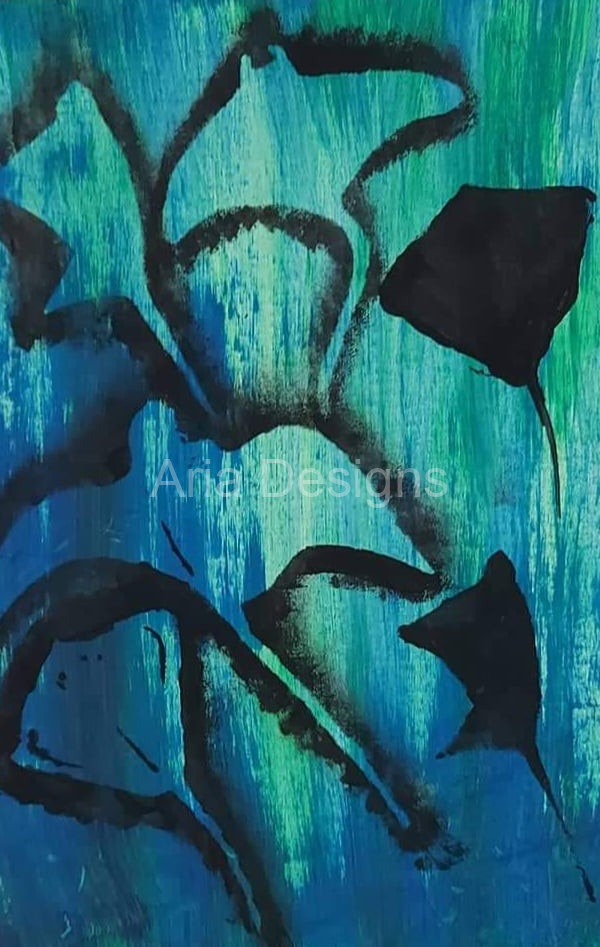
Nga Kaitiaki o Whangaroa
This lesson looks to our natural world - taiao for connection to kaitiaki. From the mountains to the sea, kaitiaki are abound and a source of cultural identity, purpose and meaning.
Here we look to Tangaroa for inspiration represented by the Whai.
Painting techniques are explored to create texture, movement and depth.
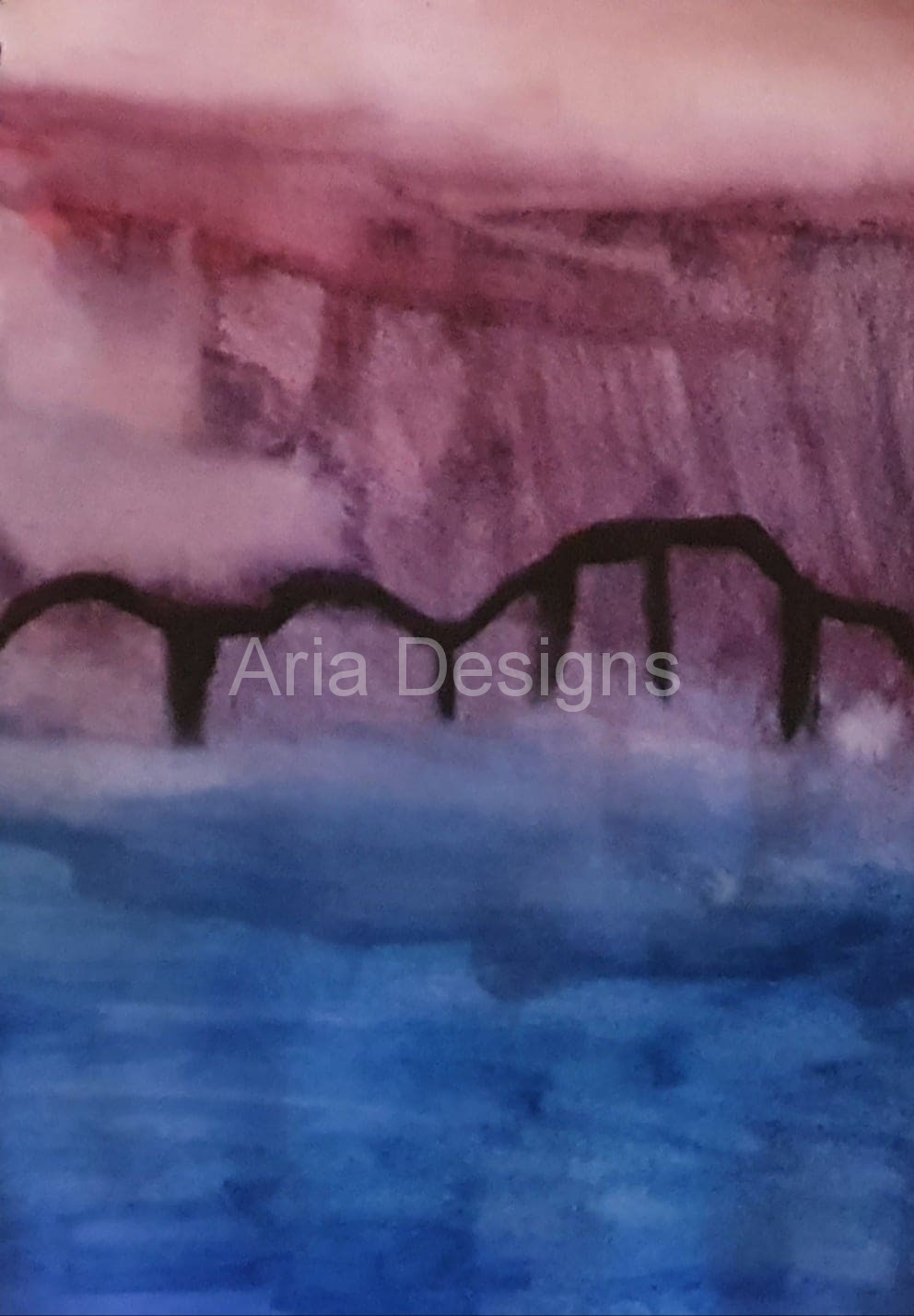
Exploring the land, from the outside in and the inside out. Watercolour techniques are used in this painting process and Taratara is the maunga represented here. We use colour to express mood and atmosphere to connect with our audience and their wairua. The texture of the water colour, it bleeds and runs adding an organic feeling to the painting. We learn we can create layers of colour using diluted water paints. We learn to be discerning. How much water added to the paint is too much, or too little. All of this is important to the painting.
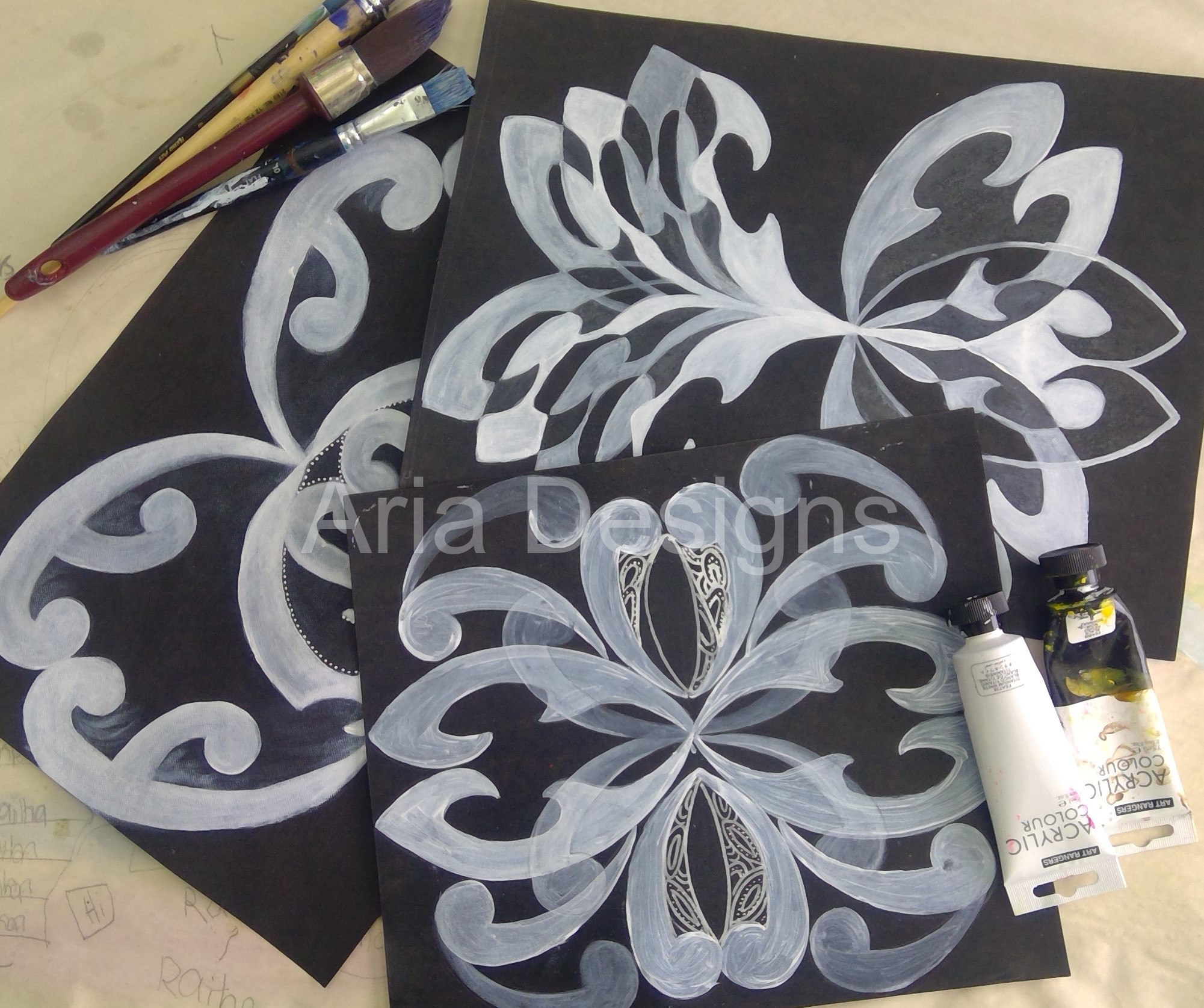
In these paintings we explore negative and positive to create an optical illusion of 3-dimensional space using black and white acrylic paint. This is an important technique to understand when creating depth, distance and form. A technique our tupuna were masters at and seen in their whakairo (carvings). Tapu represented in black (negative space), noa represented in white (positive space). Once we understand positive and negative space, we can manipulate the 1-dimnesional surface, in paint, pencil and ink effortlessly.
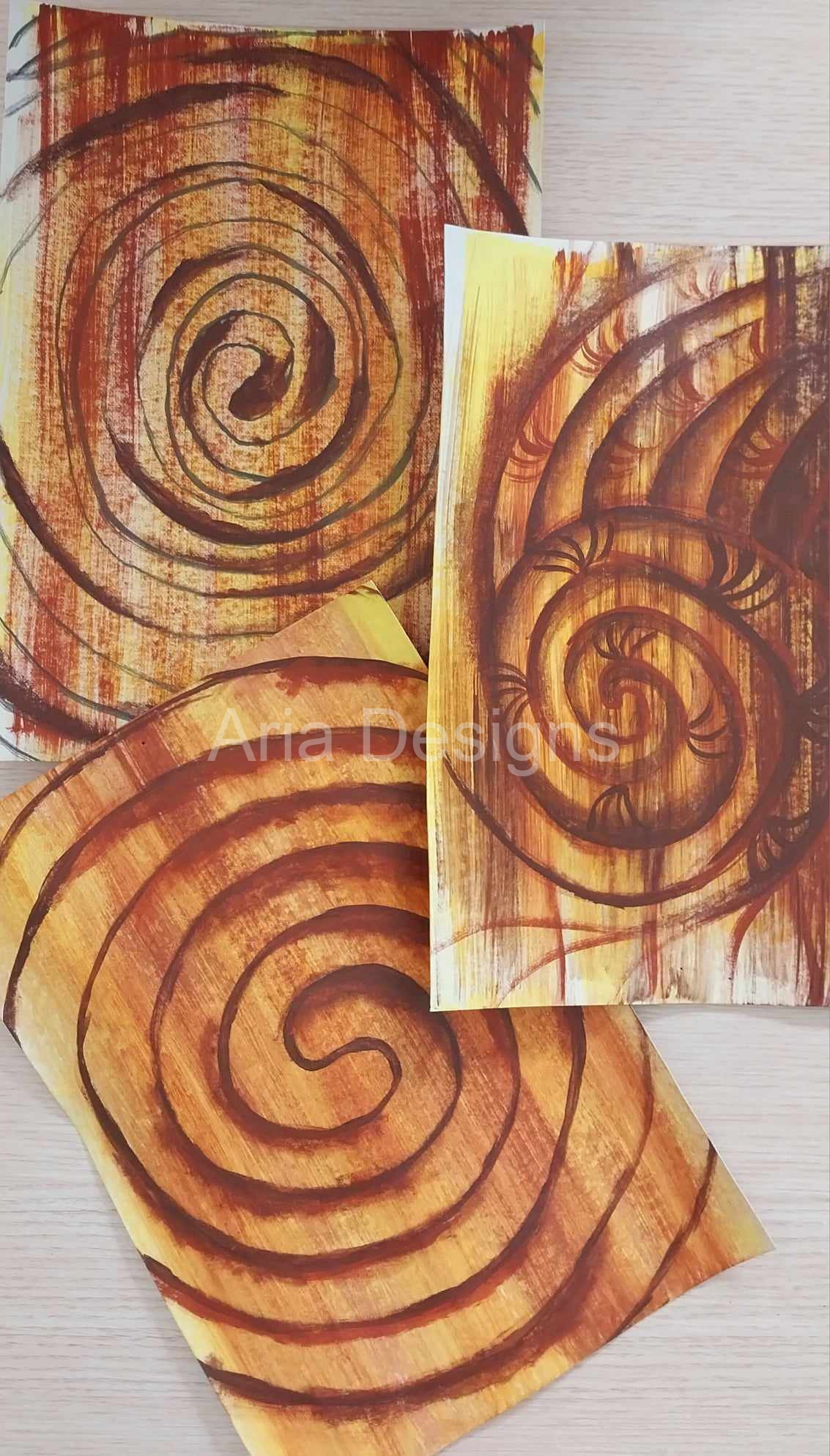
As the koru moves forward, it also returns. Here we explore movement on a flat surface using the koru in acrylic paint as a symbol of our ever-evolving world. The koru in this context also represents our consciousness and cultural identity in a state of constant change. This exercise helps our rangatahi understand that they too are a part of this cycle. Like the whenua under their feet, always moving, shifting, transforming. This is the unspoken lore of nature.
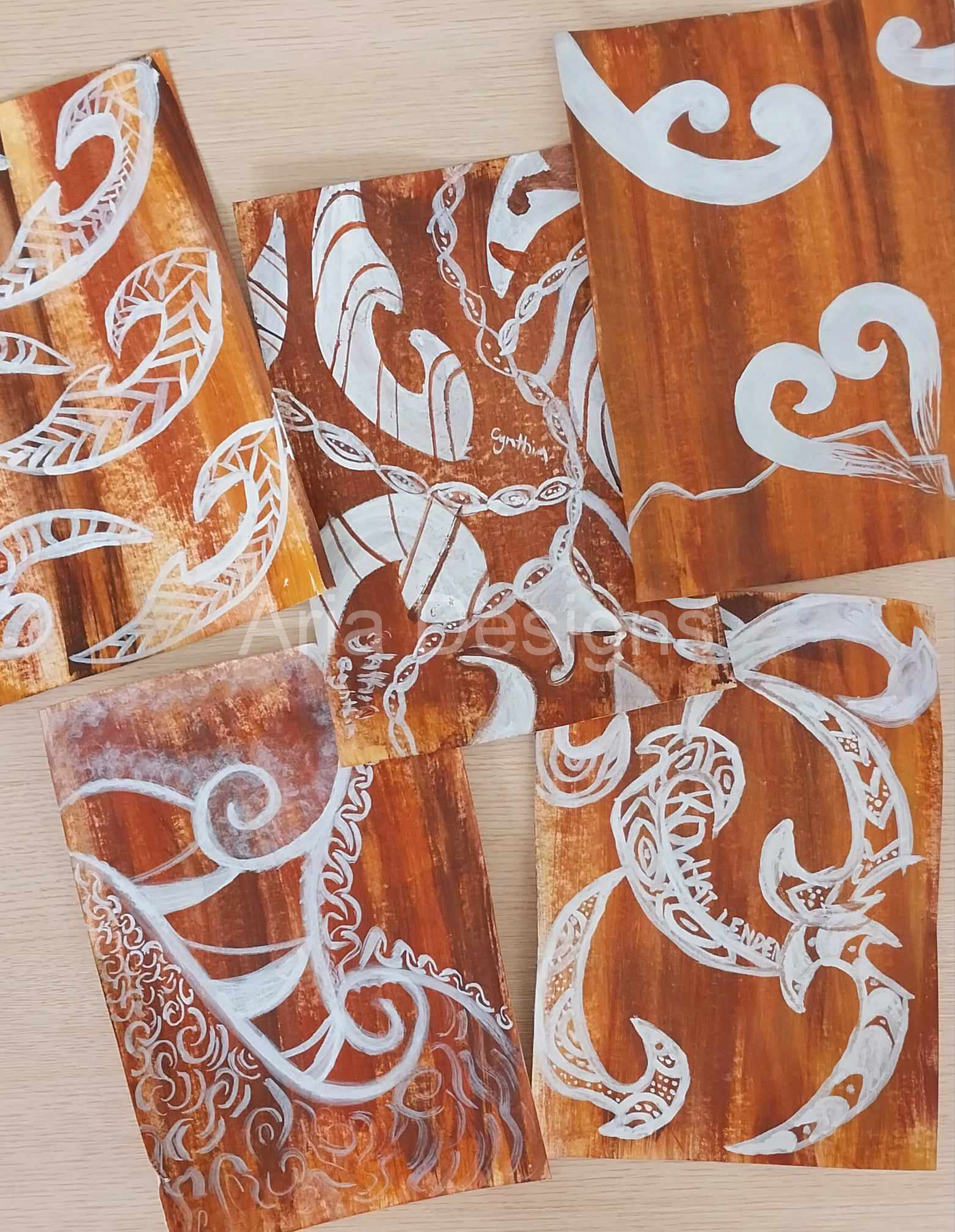
Experimenting with traditional pattern to create new designs, forms and shapes to express a modern visual language that speaks to this generation. Here the merging of past and present is represented here. Rangatahi are given traditional pattern from Ngapuhi to define and refine giving new meaning, new representations in our contemporary space. This is our responsibility as artists. To evolve our art forms so they may speak to the next generation and carry with them our aspirations for the future.
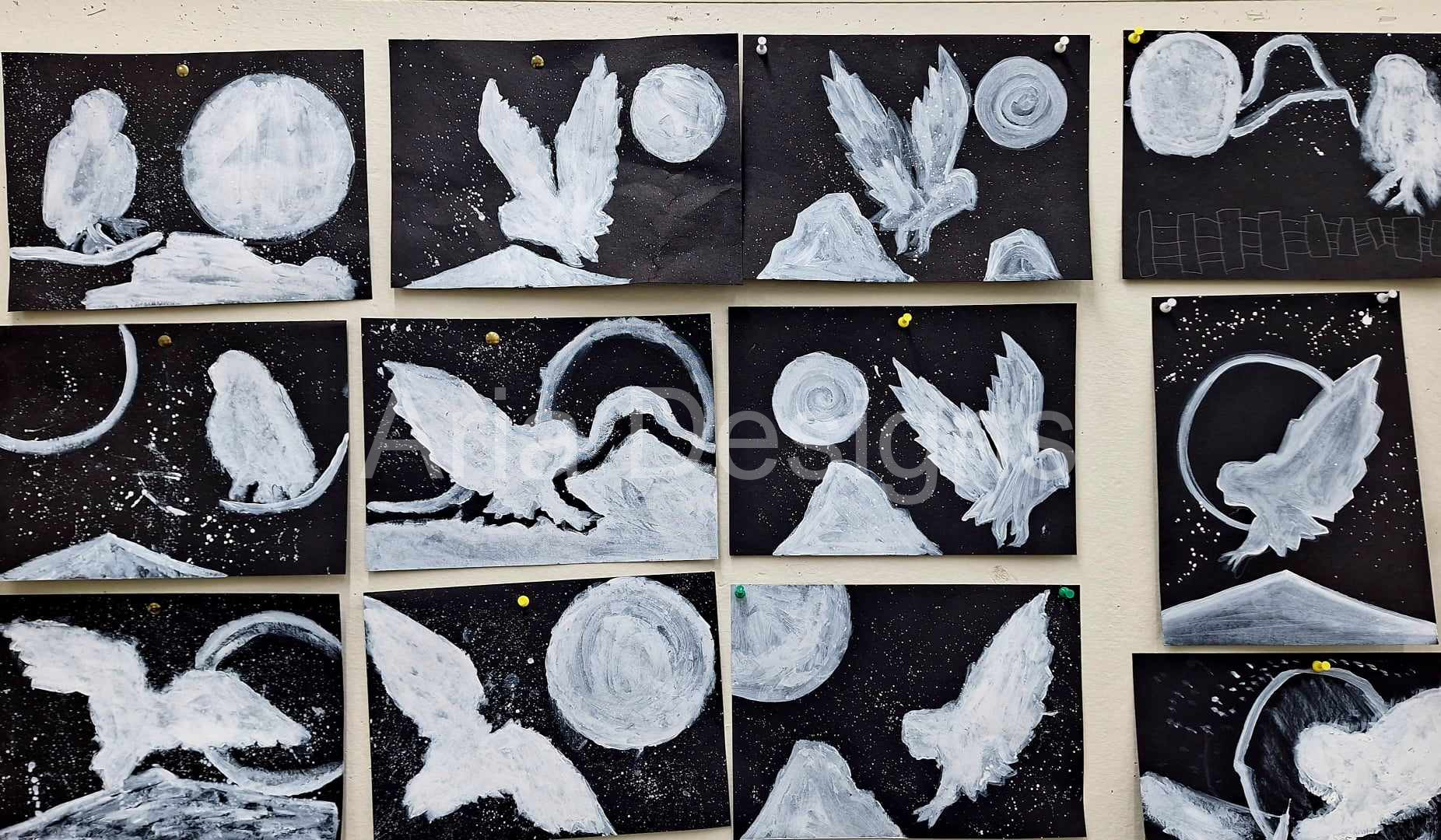
Explore tohu/symbols that represent our unique maramataka to further understand how its cycle effects our human condition. Again negative and positive space is used here to express this simple concept in relation to our emotional, spiritual and physical well-being. The Ruru is a Whangaroa kaitiaki responsible for guiding wairua to their final resting place at Cape Reinga. All these symbols connect us to our whenua, tupuna and taiao (natural environment) an endless source of creative inspiration.
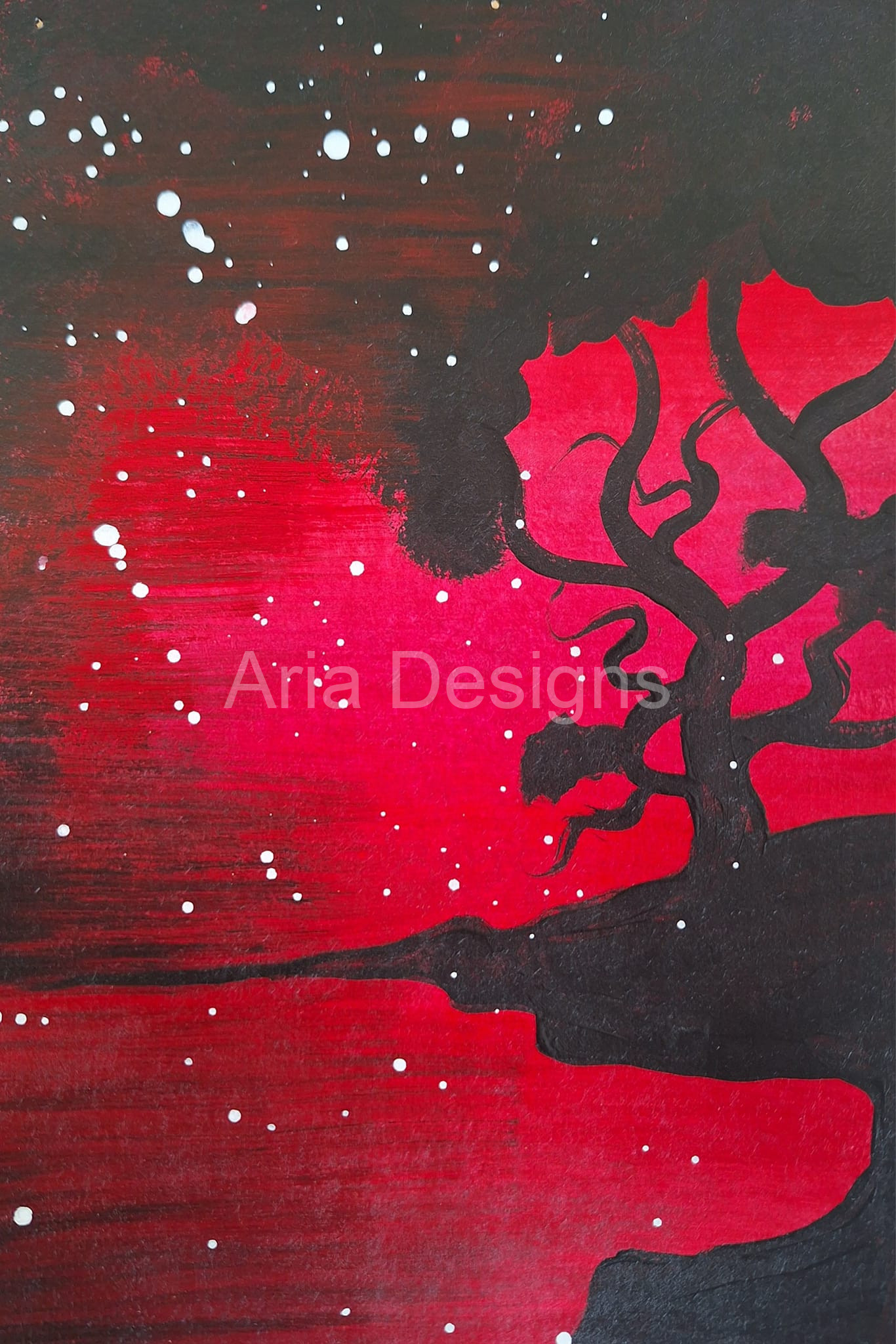
The natural world never fails to provide us with inspiration and awe to draw creatively from. This year's spectacular aurora was exactly that! Here we capture this cosmic event in acrylic paint. We explore this natural phenomenon for understanding of our universe and cosmic connection.

Matariki
In this lesson recycling found objects is an interesting practice that provides interesting results.
Here we use doyleys and spray paint to represent the stars of Matariki - Puanga here in the north.
The layering of colour for depth and the placement of pattern to create whetu.
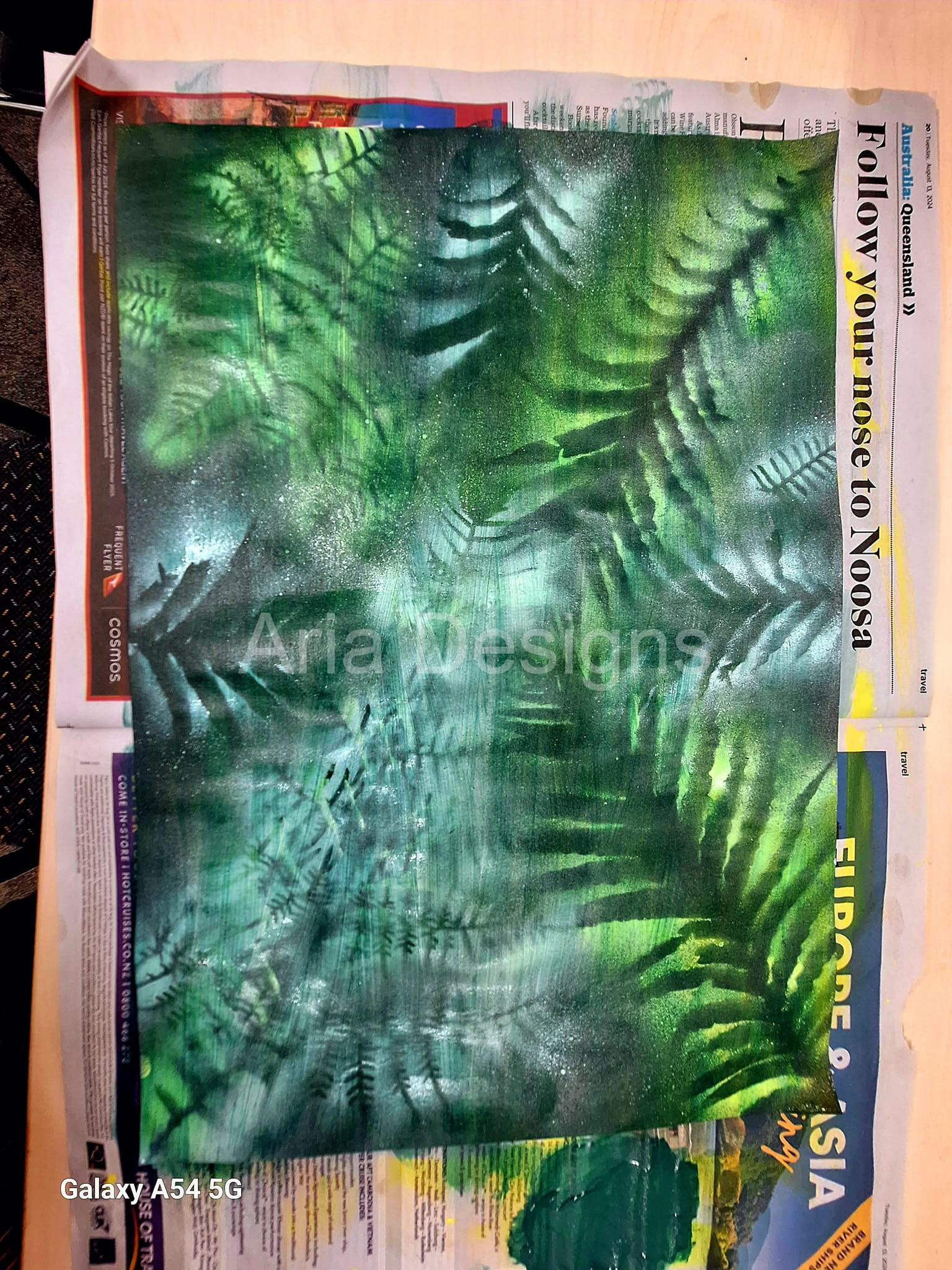
Atuatanga
In this lesson we look to our Atua for connection and creative inspiration.
Here, Tane is represented in these paintings using different fern collected from the ngahere as our stencils.
Light bursting through the fern, creating a kaleidoscope of pattern and colour.